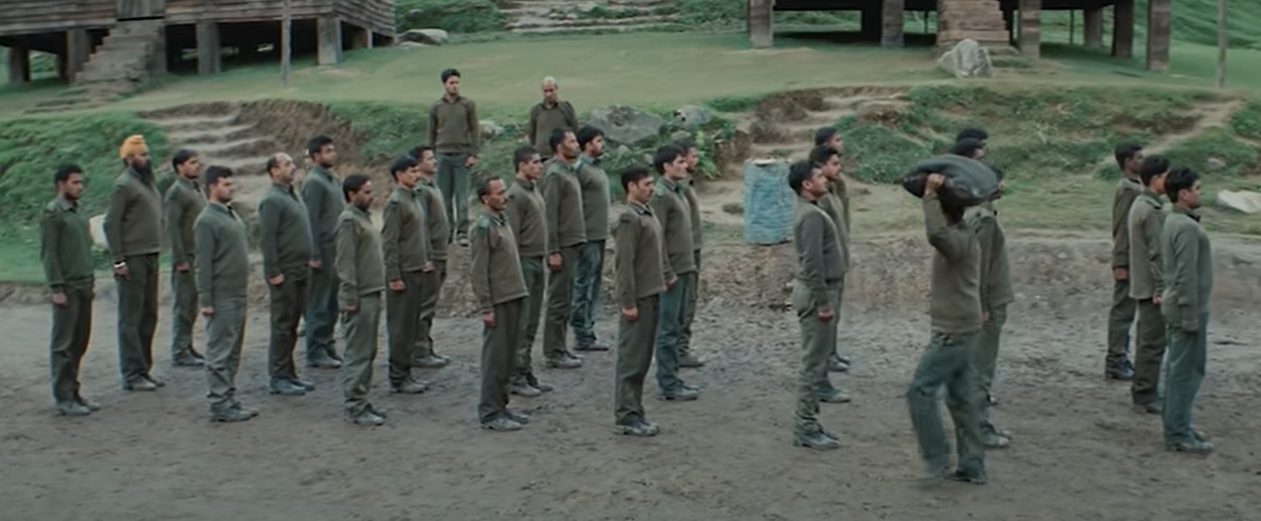Karthik Subbaraj’s Retro blends stylized filmmaking with philosophical ambition, but struggles to maintain narrative focus despite a stellar performance from Suriya.
Karthik Subbaraj’s Retro is a film as ambitious as it is uneven—a cinematic cocktail of style, nostalgia, and moral inquiry that both dazzles and drags. It seeks to be many things at once: a genre homage, a meditation on violence and redemption, and a star-driven spectacle. At times, it achieves this with verve; at others, it buckles under the weight of its own ambition.
Suriya, playing a reformed gangster caught in the undertow of his past, brings gravitas and emotional shading to a character that might otherwise have been reduced to archetype. His performance is unquestionably one of the film’s greatest assets—grounded, charismatic, and emotionally intelligent. Critics across the board, from The Federal to The Hindu, have noted the intensity he brings to the role. But even he cannot always rescue the script from its indulgences. The film’s tendency to linger on moments meant to feel profound often results in emotional repetition, dulling their impact.
Visually, Retro is sumptuous. Shreyaas Krishna’s cinematography, especially the much-discussed 17-minute single-take sequence, is technically breathtaking. But visual flair, while impressive, sometimes seems to stand in for narrative momentum. Subbaraj, known for marrying commercial form with subversive content, here appears caught between two impulses: to entertain and to philosophize. The result is a film that at times feels tonally inconsistent—swinging from poetic introspection to full-throttle violence without the connective tissue needed to make it feel cohesive.
Visually, Retro is sumptuous. Shreyaas Krishna’s cinematography, especially the much-discussed 17-minute single-take sequence, is technically breathtaking. But visual flair, while impressive, sometimes seems to stand in for narrative momentum.
Pooja Hegde’s performance as Devi is solid, though the writing does not always serve her well. While she has spoken of her pride in the project, and her emotional scenes are delivered with sincerity, her arc feels more functional than organic—less a character and more a symbol. This tendency to use characters as narrative devices rather than people is felt throughout the film, most sharply in the underdeveloped supporting cast, who often seem to orbit the protagonist without meaningful stakes of their own.
The music by Santhosh Narayanan is a high point, both atmospheric and emotionally resonant. Still, even the most evocative score can’t mask the pacing issues that dog the second half. As The Times of India’s M. Suganth noted, the film “suffers from overindulgence,” particularly as it veers into flashback-laden territory that reiterates rather than reveals.
Independent bloggers and YouTubers have offered more candid takes. Some have accused the film of “style over substance,” and a few pointed to the screenplay’s circularity as frustrating rather than meditative. Several viewers admired Subbaraj’s thematic ambitions but wished the narrative had been more disciplined. A common refrain among these voices: Retro wants to say something profound about memory, guilt, and justice, but gets lost in its own aesthetic preoccupations.
Ultimately, Retro is a film that commands attention, but not always devotion. It is bold in vision, rich in atmosphere, and anchored by a terrific central performance, but it struggles to reconcile its poetic aspirations with the mechanics of storytelling. It might be remembered less as a masterpiece than as a noble misfire—flawed, fascinating, and deeply felt.



